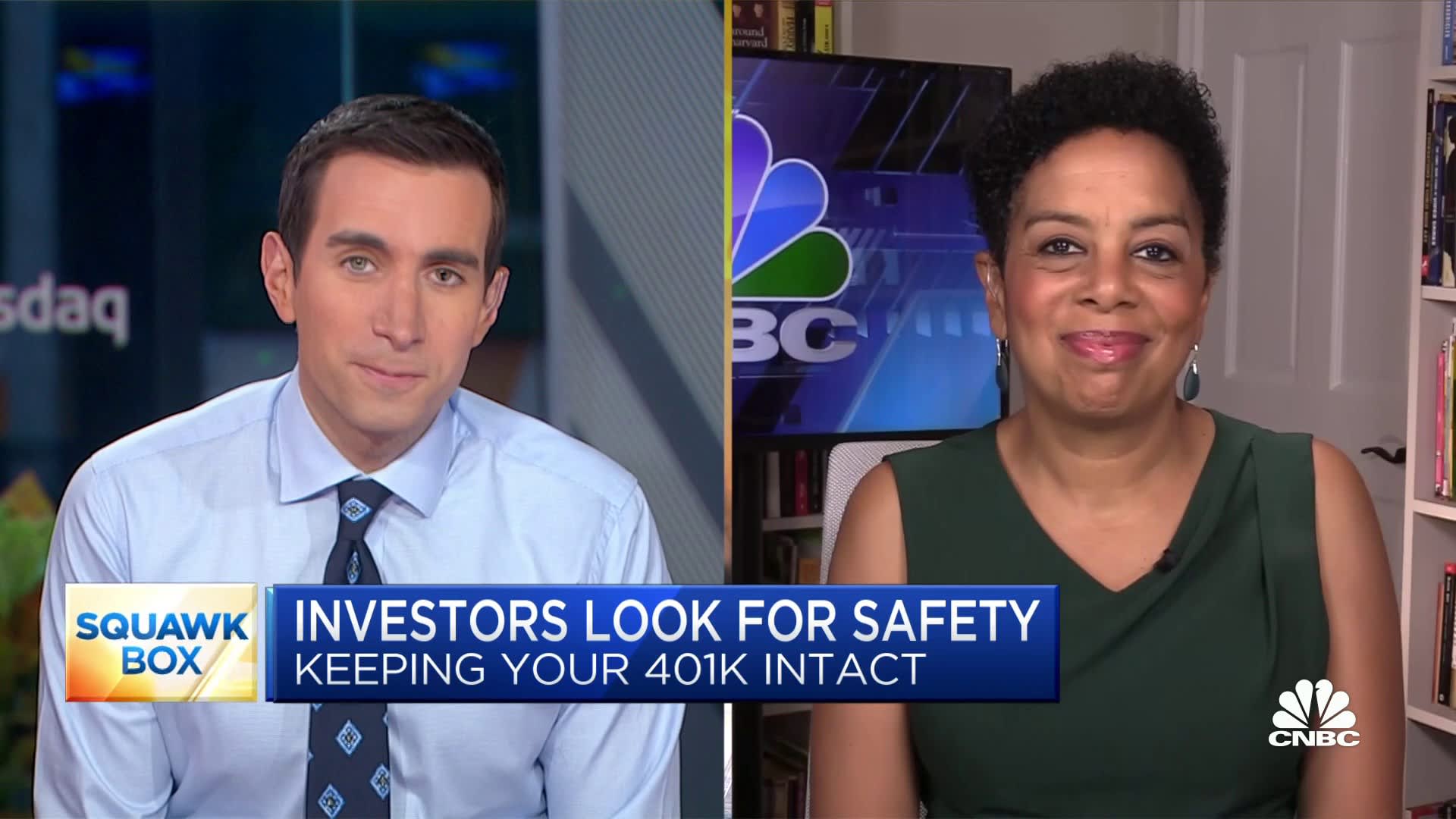Tom Brenner | Reuters
There’s still a decent chance that changes to the U.S. retirement system will be enacted before the end of the year.
Despite there being just a few months left before the next Congress convenes Jan. 3 — the midterm elections will be Nov. 8 — the push to improve Americans’ ability to save for retirement is supported by both Republicans and Democrats.
The proposals are collectively called “Secure 2.0” — which is a nod to the 2019 Secure Act, whose provisions ushered in major changes to the retirement system for the first time since 2006.
“There’s still tremendous bipartisan interest in doing another retirement security bill,” said Paul Richman, chief government and political affairs officer for the Insured Retirement Institute.
More from Personal Finance:
The 10 states where renters are most behind on payments
Medicare’s annual enrollment period starts Oct. 15
How to invest heading into a recession, per top-rated advisors
“I think the opportunity for that to happen would be … following the midterm elections when [lawmakers] would be doing some tax-related bills,” Richman said. “It would be the right place because most of the changes would affect the tax code.”
Differences still need to be worked out
The House passed its version of Secure 2.0, the Securing a Strong Retirement Act (H.R.2954), in late March with a bipartisan vote of 414-5.
In the Senate, committees with jurisdiction over retirement-related provisions have already approved proposals that collectively form the basis of that chamber’s Secure 2.0 version: The Health, Education, Labor and Pensions Committee advanced the so-called Rise & Shine Act (S.4353) in June, and the Finance Committee approved a bill in September known as the EARN Act (S.4808).
Of course, differences between the House-passed bill and the Senate’s proposals would need to be worked out before a final package could be approved by both chambers.

“Our understanding is that staff of the committees with jurisdiction have begun discussions,” Richman said.
If Secure 2.0 doesn’t make it into law by the end of 2022, the entire legislative process would have to start over with new proposals in a future Congress.
Here are some key provisions under consideration for Secure 2.0, some of which are the same or similar in both the House and Senate Secure — and others that are not.
Tapping 401(k) funds for emergencies
Two proposals in the Senate — approved in separate committees — address access to emergency funds.
One would allow employers to automatically enroll their workers in emergency savings accounts, at 3% of pay, that could be accessed at least once a month. Workers would be able to save up to $2,500 in the account, and any excess contributions would automatically go to a linked 401(k) plan account at the company.
The other Senate proposal takes a different approach: It would let workers withdraw up to $1,000 from their 401(k) or individual retirement account to cover emergency expenses without having to pay the typical 10% tax penalty for early withdrawal if they are under age 59½.
Our understanding is that staff of the committees with jurisdiction have begun discussions.
Paul Richman
Chief government and political affairs officer for the Insured Retirement Institute
Under both House and Senate proposals, victims of recent domestic abuse would also not face the 10% penalty for withdrawing up to $10,000 from their retirement savings (or 50% of the account balance, whichever is less).
Increasing access to the saver’s tax credit
Under current law, many lower- and middle-income workers are eligible for the so-called saver’s tax credit. It’s worth either 50%, 20% or 10% (depending on income) of contributions made to a workplace plan or IRA, for a maximum credit of $1,000 ($2,000 for married couples).
The credit is not available to taxpayers with adjusted gross income of $34,000 or more ($68,000 for joint filers). It also is nonrefundable, meaning that if your tax liability is zero, you don’t get any of the credit’s value as a refund.
The House-passed bill would increase the income cutoff and expand how many people qualify for the full credit.
The Senate provision is similar, but would also make the credit fully refundable, as well as require the refund to be deposited into a worker’s retirement account — although amounts under $100 would be sent directly to taxpayers.
Mandating automatic 401(k) enrollment for many
The bill that cleared the House would require employers to automatically enroll employees in their 401(k) plan at a rate of at least 3% and then increase it each year until the worker is contributing 10% of their pay. Workers could opt out.
It excludes existing plans, businesses with 10 or fewer employees and companies that are less than 3 years old.
The Senate has not proposed auto enrollment.
Upping the catch-up contribution ante
Nosystem Images | E+ | Getty Images
Currently, retirement savers age 50 or older can make so-called catch-up contributions to their retirement savings. On top of the standard annual contribution limits — $20,500 for 401(k) plans and $6,000 for individual retirement accounts in 2022 — those who qualify can put an extra $6,500 in their 401(k) or $1,000 in their IRA.
The House bill would expand the 401(k) catch-up to $10,000 for individuals who are age 62, 63 or 64. Workers enrolled in so-called SIMPLE plans would be allowed $5,000 in catch-up contributions, up from the current $3,000.
The Senate proposal differs by allowing people from age 60 through age 63 make the extra $10,000 catch-up contribution.
Both chambers’ proposals would require all catch-up amounts to be made as Roth (after-tax) contributions.
Making part-timers 401(k)-eligible earlier
The original Secure Act made it so part-time workers who book between 500 and 999 hours for three consecutive years could be eligible for their company’s 401(k). Both the House and Senate now want to reduce that to two years.
(Companies already have been required to grant eligibility to employees who work at least 1,000 hours in a year.)
Leaving behind small 401(k) balances
Under current law, if you take a new job and leave behind a 401(k) worth less than $5,000, your ex-employer can kick you out. For amounts under $1,000, you could be cashed out, while amounts between $1,000 and $5,000 get rolled over to an IRA.
Both the House and Senate propose raising that upper amount to $7,000.
A related proposal in both chambers would create a national retirement savings “lost and found” to help workers reconnect with retirement accounts they’ve lost track of as they move from job to job throughout their career.
Student loans versus retirement savings
Liyao Xie | Moment | Getty Images
Proposals in both the House and Senate would make it easier for employers to make contributions to 401(k) plans (and similar workplace plans) on behalf of employees who are making student loan payments instead of contributing to their retirement account.
Raising the required minimum distribution age
Under the House-passed bill, required minimum distributions, or RMDs, from retirement accounts would start at age 75 by 2033, up from the current age 72 (which was increased in the original Secure Act from age 70½).
The Senate proposal would raise the RMD age to 75 by 2032.
Both would reduce the penalty for failing to take RMDs to 25% (and in some cases, 10%) from the current 50%.
Improving ease of access to annuities
One option to provide an income stream later in life is a qualified longevity annuity contract, or QLAC. Once you purchase the annuity, you specify when you want the income to start, which cannot be past age 85.
However, the maximum that can go into a QLAC is either $135,000 or 25% of the value of your retirement accounts, whichever is less.
Both bills would remove the 25% cap. The Senate measure would also increase the maximum amount allowed in a QLAC to $200,000.
Eliminating Roth 401(k) RMDs, allowing matches
Under current law, Roth IRAs — whose contributions are made on an after-tax basis — come with no mandatory withdrawals during the owner’s lifetime — but Roth 401(k) accounts do. A Senate proposal would eliminate those pre-death RMDs.
Separately, provisions in both chambers would allow workers to get their company’s 401(k) matching contributions on a Roth basis. Under current law, all matching contributions are made to a pre-tax account.

